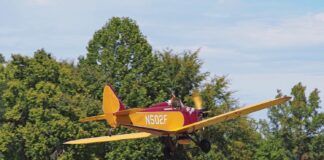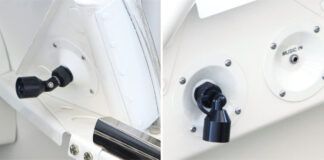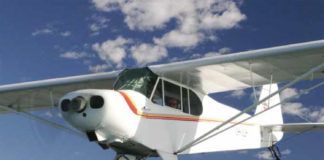In Memoriam—Geoff Jones
Sadly, the KITPLANES editorial staff was informed that Geoff Jones, a longtime contributor to our magazine, passed away at his home in Wales in April, just as this issue was being prepared. Geoff was a freelance aviation journalist and photographer for over 40 years and earned his Private Pilot license in 1977.
For this month’s report on Titan Aircraft’s T-51 Mustangs, Geoff visited Ben Chester-Master, the U.K. and European agent for Titan, who explained the differences between his Suzuki- and Honda-powered Titan T-51s.
In addition to KITPLANES, Geoff’s work has appeared in many other aviation magazines in the U.K., Germany, Italy, the U.S., and South Africa. He was also the author of numerous books including The Big Six U.S. Airlines, American Classics of the Air, and Vintage Aircraft over America.
Tailwinds, Geoff. We’ll miss you.
Thread Chasing
Years ago, one of my treats was seeing KITPLANES arrive in the mailbox. After a long hiatus, I decided to re-subscribe, and I’m delighted to see that it’s still the same wonderful magazine.
Reading Bob Hadley’s excellent article, “Chasing the Elusive Thread” [May 2017], I concluded I must be much older. The term “thread chasing” originally referred to the method where the first threads in England were cut freehand, using neither a die nor a threading lathe. The craftsman hand guided a tool along the workpiece at the rate he thought would have the threads overlap. (I think they practiced with a pencil). Once the threads started to form, the tool would “fall into lockstep,” deepening and evening out the threads. The tool determined the thread spacing, one-eighth inch or whatever, and its mass would help even out the threads and prevent wobble. It’s easy to see where the term “chasing” came from since the woodworker or metalworker had to chase the threads down the workpiece. This YouTube video, at its center, demonstrates the practice. Over the years, the term has expanded to include cleaning up damaged or corroded threads using a die or threading lathe.
—Gary Gordon
Ignition Advance
I enjoyed Nigel Speedy’s article, “The Effects of Ignition Advance on Cylinder Head Temperature, Speed, and Efficiency,” [May 2017]. The testing and article reinforces what our research and testing has shown since we have been in business. These kinds of results are the exact reason we set our ignition systems up the way we do. Again, a well-written article describing in easy-to-understand terms the effect of a good ignition system on engine performance.
—Michael Kobylik, Electroair
Help for More Than Aircraft
I subscribe to quite a few “do-it-yourself” type magazines such as Hot Rod, Popular Mechanics, etc. Of all of them, yours is by far my favorite. A lot of what I learn is applicable to my other hobbies as well as to aircraft. Please keep up the good work.
—Ken Williams
We’re always happy to help!—Ed.




